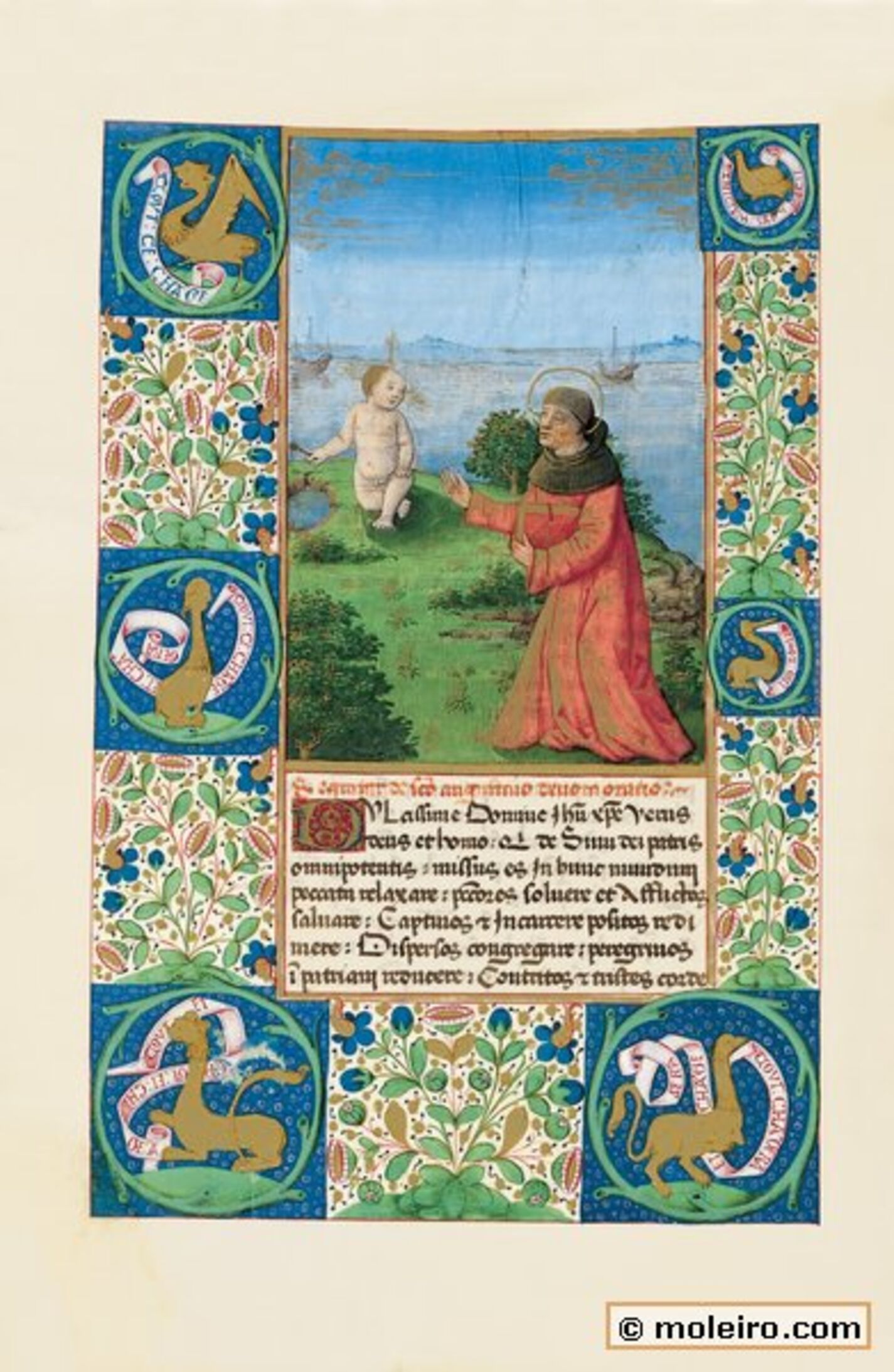The image portrays the bishop of Hippona, wearing a halo, red vestments and a biretta. He holds a book in his left hand whilst gesturing to a child opposite him with his right. This child, identified as Jesus because of the cross-shaped nimbus over his head, sits naked by a pool with a spoon in his right hand. In the background is a perfectly executed, calm seascape, with ships sailing upon it. Some cities can be glimpsed hazily through the mist in the distance. However, although the text locates the characters on a beach, they seem to be on a cliff because of the rocks, grass and bushes. The border flanking the frame has several compartments containing monsters holding scrolls which read, from top to bottom on the left: “tout:ce:change”, “tout:ce:change et:changera”, “tout est change:et: change:[r]a”; a la derecha: “initium:sapiencie”, “timor:domini”, “tout changera et change sera”.
Legend has it that while St Augustine was walking along the beach meditating about the mystery of the Holy Trinity he saw a boy using a shell to take water from the sea and pour it into a hole. When the bishop of Hippona asked him what he was doing, the child replied that he was emptying the sea into the hole he had dug. When the saint rebuked him for attempting such an impossible act, the child responded that it was just as difficult to try and understand the mystery of the Trinity. This episode is from a late date and was not included in art until the 15th century. Frequently, although not in the case of the Book of Hours of Louis of Orléans, the boy is identified with an angel and the shell replaced by a spoon. This subject had already been illustrated in Jean Colombe’s atelier in the Book of Hours of Louis of Laval (f. 309v), but in a different way. A similar model can be seen in a miniature in the Sforza Hours.
